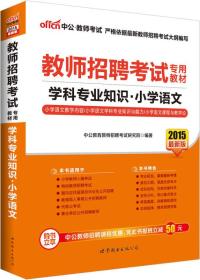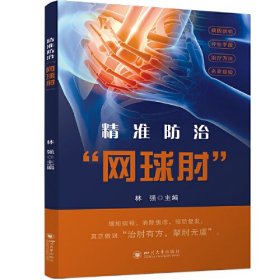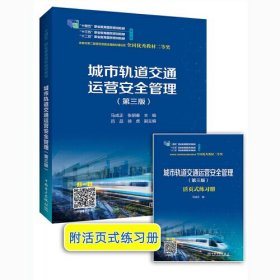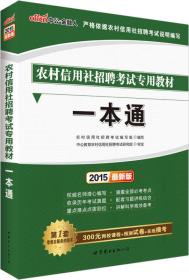
管道缺陷电磁超声螺旋导波层析成像方法
全新正版未拆封
¥ 37.39 4.7折 ¥ 79 全新
仅1件
湖南长沙
认证卖家担保交易快速发货售后保障
作者王哲
出版社清华大学出版社
出版时间2023-10
版次1
装帧精装
上书时间2024-03-07
- 在售商品 暂无
- 平均发货时间 36小时
- 好评率 暂无
- 最新上架
商品详情
- 品相描述:全新
图书标准信息
- 作者 王哲
- 出版社 清华大学出版社
- 出版时间 2023-10
- 版次 1
- ISBN 9787302636847
- 定价 79.00元
- 装帧 精装
- 开本 16开
- 纸张 胶版纸
- 【内容简介】
- 为在管道中激发出螺旋导波,《管道缺陷电磁超声螺旋导波层析成像方法》提出了一种检测金属管道缺陷用螺旋Lamb波电磁超声换能器结构,确立了它的设计原则,阐述了它的工作原理,定义了声场分析用圆周角度分布图。 为辨识并分离时域重叠的多模态导波信号,提出了一种基于多项式Chirplet变换的多模态导波分离方案,形成了不同模态导波信号的走时和幅度特征提取算法。 为定性评估管道缺陷的严重程度,提出了一种快速多螺旋Lamb波层析成像方法。具体地,基于对导波的直射线近似,建立了螺旋Lamb波缺陷检测概率性重构方法。 为定量评估管道缺陷的深度和轮廓,提出了一种基于超声衍射的高分辨率层析成像方法。具体建立了跨孔层析傅里叶衍射定理,提出了有限投影下的压缩感知层析成像模型。
- 【作者简介】
- 王哲,2012至2016年就读于重庆大学电气工程学院,获得电气工程学士学位;2016至2021年就读于清华大学电机工程与应用电子技术系,获得电气工程博士学位。在校期间,获得清华大学优秀博士论文等荣誉。
- 【目录】
-
第1章绪论
1.1选题背景和意义
1.2管道电磁超声导波检测的研究现状
1.2.1电磁超声导波激发机理
1.2.2管道中的超声导波
1.3导波投影数据提取方法研究现状
1.3.1导波与缺陷的相互作用
1.3.2导波信号分析与投影数据提取
1.4管道缺陷导波成像方法研究现状
1.5本书研究内容
第2章管道螺旋兰姆波电磁超声换能器研究
2.1本章引论
2.2螺旋兰姆波电磁超声换能器结构设计
2.2.1兰姆波的基础理论
2.2.2螺旋兰姆波换能器设计
2.3管道螺旋兰姆波洛伦兹力理论模型
2.4螺旋兰姆波换能器性能仿真验证
2.5螺旋兰姆波换能器试验验证和比较分析
2.5.1平台搭建和试验验证
2.5.2与传统换能器的比较
2.6本章小结
第3章超声导波重叠信号分离和特征提取
3.1本章引论
3.2重叠信号分离识别和特征提取
3.2.1导波的频散和多模特性
3.2.2多项式Chirplet变换
3.2.3基函数的构建
3.2.4非平稳信号的瞬时频率
3.3重叠导波信号分离和特征提取步骤
3.4仿真信号试验验证
3.4.1边界反射案例
3.4.2变距离缺陷下的稳健性验证
3.5复杂反射试验验证和比较
3.5.1考虑缺陷和边界带来的重叠
3.5.2进一步比较和分析
3.6本章小结
第4章基于直射线近似的快速螺旋导波层析成像
4.1本章引论
4.2管道多螺旋角度导波直线传播模型
4.3概率性重构成像方法
4.3.1基于信号差异系数的成像模型
4.3.2概率性重构方法步骤
4.4基于概率性重构的层析成像仿真试验验证
4.4.1单缺陷案例
4.4.2双缺陷案例
4.5实际复杂缺陷试验验证
4.5.1平台搭建和成像验证
4.5.2进一步比较和分析
4.6本章小结
第5章基于超声衍射的高分辨率螺旋导波层析成像
5.1本章引论
5.2针对跨孔层析的傅里叶衍射定理
5.3压缩感知波动层析成像模型
5.3.1非均匀快速傅里叶变换
5.3.2有限投影下的层析重建
5.3.3压缩感知求解模型
5.4基于超声衍射的层析成像方法与步骤
5.5阶梯状缺陷波动层析成像仿真试验验证
5.6复杂缺陷波动层析成像试验验证
5.6.1实际复杂缺陷成像验证
5.6.2进一步比较和分析
5.7本章小结
第6章总结与展望
6.1结论
6.2进一步工作的建议
参考文献
CONTENTS
Chapter 1Introduction1
1.1Background and Significance of Topic Selection1
1.2Research Status of Electromagnetic Ultrasonic Guided Wave Inspection of Pipelines3
1.2.1Electromagnetic Ultrasonic Guided Wave Excitation Mechanism3
1.2.2Ultrasonic Guided Waves in Pipelines4
1.3Research Status of Guided Wave Projection Data Extraction Method6
1.3.1Interaction of Guided Waves with Defects6
1.3.2Guided Wave Signal Analysis and Projection Data Extraction8
1.4Research Status of Guided Wave Imaging Methods for Pipeline Defects10
1.5Research Content13
Chapter 2Research on Pipeline Helical Lamb Wave Electromagnetic Ultrasonic Transducers16
2.1Introduction to this Chapter16
2.2Structural Design of Helical Lamb Wave Electromagnetic Ultrasonic Transducer17
2.2.1The Basic Theory of Lamb Wave17
2.2.2Design of Helical Lamb Wave Transducer20
2.3Theoretical Model of the Lorentz Force for the Pipeline Helical Lamb Wave23
2.4Simulation and Verification of the Performance of the Helical Lamb Wave Transducer25
2.5Experimental Verification and Comparative Analysis of Helical Lamb Wave Transducers29
2.5.1Platform Construction and Verification29
2.5.2Comparison with Traditional Transducers32
2.6Chapter Summary36
Chapter 3Ultrasonic Guided Wave Overlapping Signal Separation and Feature Extraction38
3.1Introduction to this Chapter38
3.2Overlapping Signal Separation Identification and Feature Extraction39
3.2.1Dispersion and Multimode Characteristics of Guided Waves39
3.2.2Polynomial Chirplet Transform40
3.2.3Construction of Basis Functions43
3.2.4Instantaneous Frequencies of Non-Stationary Signals45
3.3Overlapping Guided Wave Signal Separation and Feature Extraction Steps46
3.4Verification with Simulation Signal48
3.4.1Boundary Reflection Case49
3.4.2Robustness Verification under Defects with Variable Distance51
3.5Verification and Comparison under Complex Reflection55
3.5.1Considering Overlap from Defects and Boundaries55
3.5.2Further Comparison and Analysis59
3.6Chapter Summary62
Chapter 4Fast Helical Guided Wave Tomography Based on Staight Ray Approximation63
4.1Introduction to this Chapter63
4.2Pipeline MultiHelical Guided Wave Propagation Model64
4.3Probabilistic Reconstruction Imaging Methods66
4.3.1Imaging Models Based on Signal Difference Coefficient66
4.3.2Probabilistic Reconstruction Method Steps69
4.4Verification for Tomography Based on Probabilistic Reconstruction with Simulation Signal70
4.4.1The Single Defect Case70
4.4.2The Double Defect Case74
4.5Verification with Real Complex Defect75
4.5.1Platform Construction and Imaging Verification75
4.5.2Further Comparison and Analysis77
4.6Chapter Summary80
Chapter 5Ultrasonic DiffractionBased HighResolution Helical Guided Wave Tomography81
5.1Introduction to this Chapter81
5.2The Fourier Diffraction Theorem for Cross-hole Tomography82
5.3The Compressed Sensing Tomography87
5.3.1Non-uniform Fast Fourier Transform88
5.3.2Tomographic Reconstruction under Finite Projection91
5.3.3Solution Based on Compressed Sensing94
5.4Procedures of Ultrasound Diffraction-Based Tomography95
5.5Verification with Simulated Staircase Defect for Tomography97
5.6Verification of Tomography with Complex Defect103
5.6.1Verification with Real Complex Defect103
5.6.2Further Comparison and Analysis105
5.7Chapter Summary108
Chapter 6Conclusions and Future Recommendations109
6.1Conclusion109
6.2Recommendations for Further Work111
References112
点击展开
点击收起
— 没有更多了 —












以下为对购买帮助不大的评价